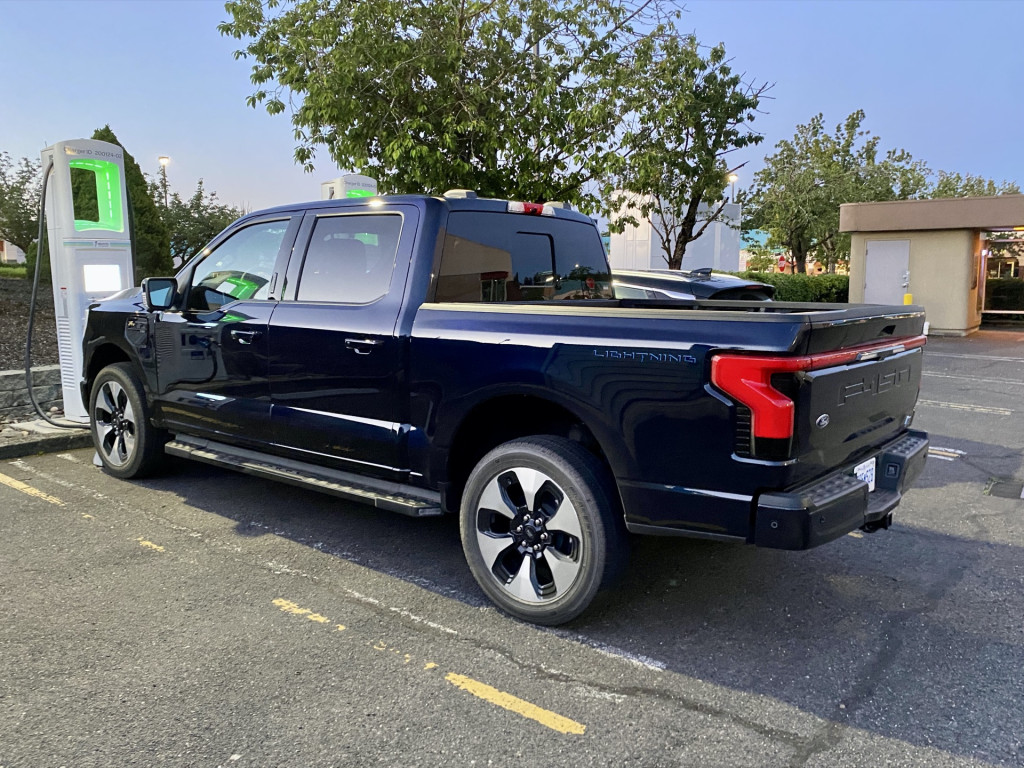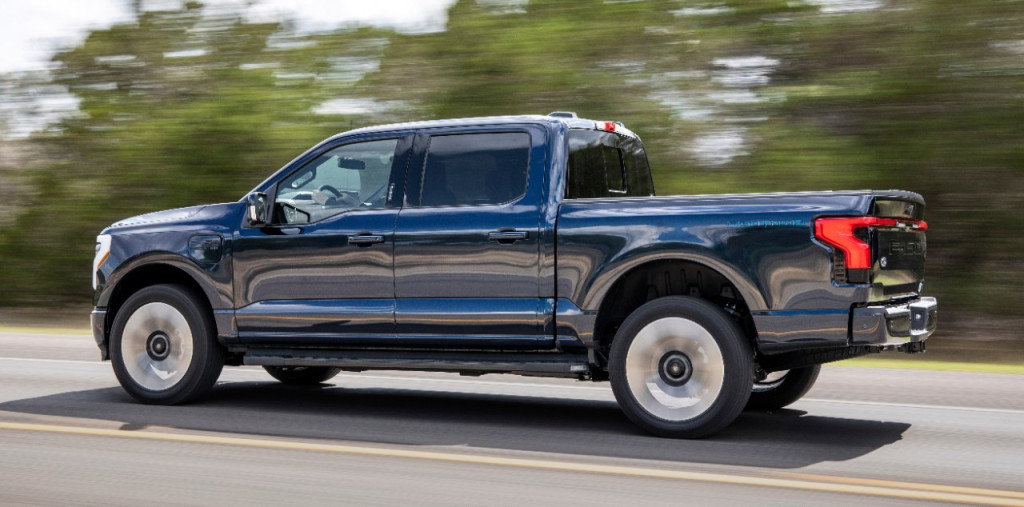City Dwellers Best Car To Buy 2023

Ford has revolutionized the pickup truck—by making a fully electric version of its top-selling vehicle, the F-150.
While doing that, and seemingly changing as little as possible about all that already makes the F-150 so desirable, it’s created a better vehicle. That’s why even though the F-150 Lightning isn’t the first mass-produced fully electric pickup, it’s our City Dwellers Best Car To Buy 2023.
The Ford F-150 Lightning looks like a gasoline F-150 in all but front and rear styling cues (and corresponding lighting), but it turns out a whole lot about the electric truck is different underneath. It gets a new frame—somewhat wider to fit the battery pack suspended between it, with thicker cross members. Steering and braking are reengineered for the Lightning, which also gets an independent rear suspension with coil-over springs.
What results is a truck that rides and handles better than the gasoline F-150 in most conditions, with unparalleled quiet and refinement. Plus, in washboard gravel, off-road trails, or snow-slicked roads, the virtually instantaneous traction systems working with the electric motors show their strength and allow you to pull up that boat ramp—or over that wet log—without upsetting the tires’ footing. Pop the hood, and you get something the gasoline truck doesn’t have: a vast frunk that offers power plugs and can hold up to 400 pounds. How ‘bout some frunkgating?

2022 Ford F-150 Lightning
All versions of the F-150 Lightning are built with front and rear permanent-magnet motors providing all-wheel drive, with a crew-cab layout and the same bed length. There are essentially two tech specs: Versions with the 98-kwh standard range battery pack make 452 hp and 775 lb-ft, while those with the 131-kwh extended range pack make 580 hp and 775 lb-ft. EPA driving range for the Lightning stands at 240 miles and 320 miles, respectively.
Unladen, the Lightning leaps forward, with enough of a shriek of the tires to let you know it’s using every bit of available traction. Ford has cited a 0-60 mph acceleration time of under four seconds and, seated from high up, with a body that squats and dives a fair amount, it’s as much a fun-park ride inside as it must appear from outside—truer to the Lightning label than the gasoline truck that used to bear the name.
It offers more payload capability than many of its gasoline counterparts. And at up to 10,000 pounds, it will out-tow much of the gasoline-truck lineup. Just don’t plan to pull that trailer very far.

Ford F-150 Lightning at Electrify America
The F-150 Lightning doesn’t charge quickly if you think in road-trip terms. Ford says that it will charge at up to 150 kw, or from 15-80% in less than 45 minutes, but those are both best-case-scenarios from what we’ve seen at typical U.S. Electrify America hardware.
If you happen to have 100 amps free for its own circuit, install the 80-amp Charge Station Pro and charge times for a full charge drop to about 8 hours on 240 volts—or about 30 miles per hour. That unit forms the basis for where the Lightning truly becomes an EV trendsetter: Add the $3,895 Home Integration System, and with Ford’s app the Lightning can become its own power ecosystem—helping juggle solar, or acting just as a portable generator (minus the hum and diesel odor) when the power goes out.

2023 Ford F-150 Lightning
That system and its inclusion under warranty go a long way toward convincing us that Ford sees a big picture that others haven’t. So does the company’s Ford Pro fleet-software push, and its strategy not to make electric vehicles a niche sub-brand but actual vehicles that compete on nearly every level—even outshine—the gasoline versions of F-150, Transit, and Mustang.
The F-150 Lightning has some undeniable strengths versus any of our other finalists for City Dwellers Best Car To Buy 2023—most notably, that it feels fully baked, is available in all 50 states, and doesn’t feel like it was held back somewhere along the way.
The Cadillac Lyriq signals the start of a generation of Ultium-platform vehicles, and it’s impressive in many respects, like styling, ride, and handling. But what we’ve seen so far hasn’t quite delivered on the interface or charging side. Its efficiency deserves a longer look, too—one we haven’t yet been able to take. We love the no-holds-barred attitude behind the Genesis GV60, and how it takes personal luxury into a new space—with a line-green “boost” button and crystal-ball shifter—though at the end of the day we just can’t give top props to a model that’s offered only in a portion of the U.S. The Kia EV6 wins if style were the main criteria, and it offers speedy charging and an impressive interface, but in dropping base versions the brand seems to be playing a niche game rather than taking advantage of all the capital in that design. The Mercedes-Benz EQS SUV builds on the impressive efficiency of the EQS hatchback, adding three rows of seating and trail ability, plus U.S. assembly, but it simply doesn’t push the bar higher.

2023 Ford F-150 Lightning
The biggest Lightning strike-outs so far have been its unavailability and repeated price hikes. Ford hadn’t even been accepting reservations for some of the past year; just nine months since first deliveries, the standard range base 2023 Ford F-150 Lightning Pro starts at $57,869 (including a hiked $1,895 destination fee)—up nearly 40% from the original $41,669, including destination, for the 2022 model year.
Part of that stems from an earlier, stunning underestimation of Lightning demand. It’s managed to bump Lightning production from an original 20,000 annually up to 150,000.
Why all this interest, again? The F-150 Lightning hits on a point that jumps past the technology early adopters that have often served as a sort of Achilles’ heel for actual widespread EV adoption. Yes, there’s plenty of room for reinventing the car (or truck), making our roads safer, and perhaps relying less on vehicles in the first place, but in this moment, showing people how the familiar can be made better as an EV is the most powerful statement of all.